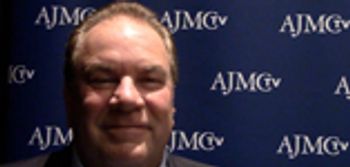
Wound care specialists, who treat burn victims and diabetics with foot ulcers, say the move to end coverage if a dressing is made of more than 50% honey by weight is arbitrary and makes no sense from a medical standpoint. A final LCD is pending.

Wound care specialists, who treat burn victims and diabetics with foot ulcers, say the move to end coverage if a dressing is made of more than 50% honey by weight is arbitrary and makes no sense from a medical standpoint. A final LCD is pending.

A decade after the introduction of the Medicare Part D program and the program has seen great success-but that may be coming to an end. Panelists debated just that and discussed rising drug costs during a session at America's Health Insurance Plans' National Conference on Medicare.

While there are reports of high patient satisfaction and well-managed costs in the Medicare program, the next 50 years will be full of new challenges, said Andrew Slavitt, acting CMS administrator, during the opening session at America's Health Insurance Plans' National Conference on Medicare.

An update on recent progress in oncology managed care.

Even though the US spent far more on healthcare in 2013 than other comparable high-income countries, it has the lowest life expectancy and some of the worst health outcomes, according to a study by The Commonwealth Fund.

A new report found that while geographic gaps narrowed, they will likely persist because state policies to not expand Medicaid will mean the poor will continue to turn 65 with health issues having gone unaddressed.

Changes in the healthcare marketplace are steadily pushing changes for physicians and specialty practices of all kinds. Blaming the 340B drug discount program is both misleading and unproductive.

What we're reading on October 12, 2015: health insurance marketplaces may have challenges keeping customers they already have, but in California, consumers leaving the state insurance exchange are gaining coverage elsewhere, and the government is increasingly pursuing cases of potentially unnecessary procedures.

Integrated Medicare and Medicaid managed care may not sufficiently address the problems of inefficiency and fragmentation in care for hospitalized dual eligible enrollees.

A new study published in JAMA Oncology has identified disparate survival outcomes across sites of care.

Taking aim at payment models for patients on dialysis is the latest attempt to target high-cost areas of Medicare spending.

The announcement covered a final rule on interoperability for creators of Health IT, and a proposal to simplify current rules for providers. Both look ahead to implementation of the new Medicare and CHIP reimbursement models.

The PBM declined to list what discounts it had negotiated, but said it expected to spend $750 million on this cholesterol-lowering class in 2016.

The research raises questions whether Medicare Advantage plans are the solution to controlling spending on the patients who account for most healthcare costs.

One of the great aspects of the Medicare Shared Savings Program is that it provides an important opportunity directly to physicians, said Louis Morgenier, chief executive officer of Physicians ACO, LLC.

A new medication therapy management model being rolled out by CMS will test strategies to improve medication use among Medicare beneficiaries enrolled in the Part D drug program.

Most telling were the interviews with hospital leaders, who said the bonus payments did more to reinforce existing trends in quality care than alter them.

The findings come as CMS is poised to finalize a rule to pay doctors to counsel patients about end-of-life treatment options.

As the country increases the pace of shifting to value-based payments, a significant question remains: how can independent primary care doctors operate in this new environment?

The technology was approved by FDA in June and unveiled at the Scientific Sessions of the American Diabetes Association.

Although CMS has introduced a strict timeline to move to value-based payments, its new Oncology Care Model is partially relying on fee-for-service, and that's a good thing in the case of oncology, said Ira Klein, MD, MBA, senior director of quality, Strategic Customer Group at The Janssen Pharmaceutical Companies of Johnson & Johnson.

Medicare beneficiaries undergoing dialysis who reach the Part D coverage gap have increased out-of-pocket spending, increased medical service utilization and costs, and increased mortality, according to a new study.

Healthcare groups and members of the Senate Judiciary Committee have weighed in with concerns about decreased competition and harm to consumers if the Aetna-Humana and Anthem-Cigna transactions are approved.

Public outrage over the 5000% price increase for Daraprim, a 62-year-old drug purchased by Turing Pharmaceuticals in August, prompted the company to promise it would lower the drug's cost. This is not the first time such an incidence has occurred.

Hillary Clinton unveiled a plan in Iowa that features a $250 per month cap on drug costs for patients with chronic conditions. This comes 2 weeks after her chief rival for the Democratic nomination, US Senator Bernie Sanders of Vermont, introduced a bill aimed at reining in drug costs. In the summer, The American Journal of Managed Care said polling showed that rising drug costs were poised to become a major issue in the 2016 campaign.

259 Prospect Plains Rd, Bldg H
Cranbury, NJ 08512
© 2025 MJH Life Sciences®
All rights reserved.
